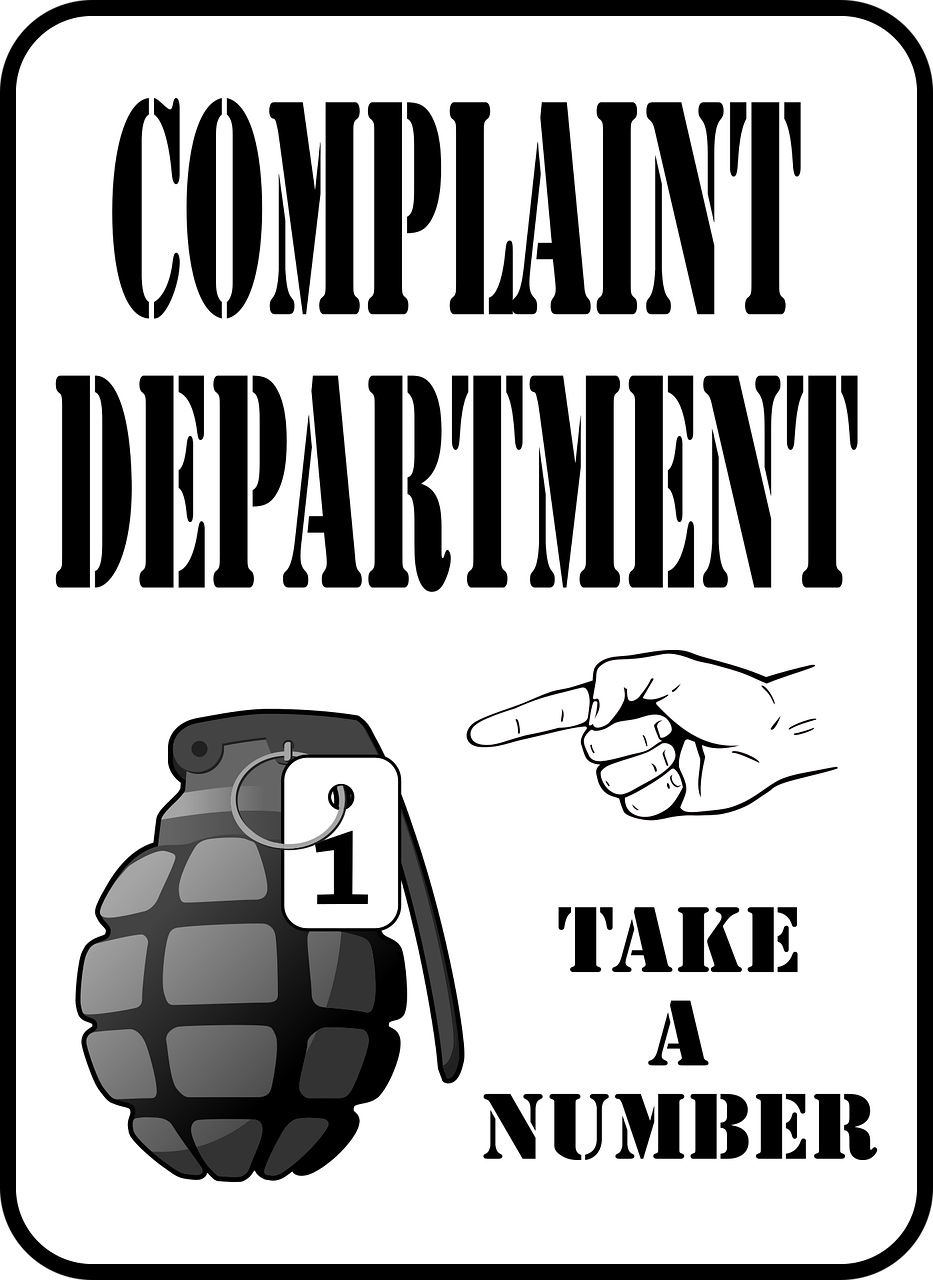In today’s hyper-competitive market, customer feedback—including complaints—is not just a necessary evil but a hidden goldmine for businesses striving to thrive. Around the world, companies across diverse industries face the same fundamental challenge: how to transform customer dissatisfaction into a catalyst for improvement and expansion. Giants like Amazon, Starbucks, and Apple have long leveraged their customer complaint channels not only to solve problems but to innovate and elevate their brands. These brands understand that every complaint carries the seeds of transformation, offering priceless insights into product flaws, service gaps, or unanticipated customer needs. However, turning complaints into growth is no accident; it requires a deliberate, finely tuned strategy that embraces empathy, responsiveness, and continuous learning.
Whether it’s a delayed shipment through Amazon, a service hiccup at Delta Airlines, or a technical glitch with a Tesla product, complaints are inevitable. Rather than trying to minimize or ignore them, leading companies recognize the opportunity to build stronger loyalty, reduce churn, and even harness complaints as crucial marketing moments. In fact, companies like Zappos and Costco utilize customer complaints as internal indicators for process optimization and innovation, which directly correlates with increased customer satisfaction and business efficiency.
This article explores how to convert these seemingly negative experiences into your biggest growth opportunities. We will examine proven steps businesses can take, such as active listening, empathetic engagement, sincere apologies, effective problem-solving, diligent follow-ups, and complaint tracking. Additionally, the integration of advanced technologies like AI chatbots—employed successfully by Netflix and Disney—is revolutionizing how complaints are managed in real-time, improving customer experiences dramatically. Ultimately, we delve into practical, actionable methods that can help your organization, irrespective of size or sector, evolve with the invaluable feedback embedded in each customer complaint.
Mastering Active Listening: The First Step to Unlocking Customer Feedback Value
Active listening is the cornerstone of transforming customer complaints into growth opportunities. At its core, it requires giving full attention to the customer’s concerns without interruption, signaling genuine interest and respect. Consider the example of Apple’s customer service, which trains representatives extensively on reflective listening techniques to paraphrase and clarify customer statements. This not only uncovers the root cause of the complaint but also reassures the customer they are genuinely heard.
Beyond just hearing words, active listening involves understanding the emotions and context behind the complaint. For instance, a frustrated Nike customer complaining about product durability isn’t merely reporting a defect; they are expressing disappointment that affects their brand perception. Addressing this emotion can shift negative energy into an opportunity for brand loyalty reinforcement.
Businesses can implement active listening by using specific approaches such as:
- Paraphrasing the complaint to ensure understanding (e.g., “To confirm, your shipment was delayed by three days, causing inconvenience, correct?”).
- Asking open-ended questions to gather detailed insights (e.g., “Can you describe when and how the issue occurred?”).
- Maintaining neutral and positive body language in face-to-face interactions.
- Leveraging digital tools such as sentiment analysis on customer chats or social media posts to detect emotional cues.
Exceling at active listening paves the way for effective resolution strategies and helps prevent escalation. When a customer feels genuinely heard, their willingness to continue doing business—even after a problem—dramatically increases.

Here is a table summarizing the benefits and methods of active listening:
| Benefits of Active Listening | Methods to Practice Active Listening |
|---|---|
| Builds trust and rapport | Paraphrasing and clarifying customer statements |
| Uncovers underlying issues beyond surface complaints | Asking open-ended, probing questions |
| Reduces conflict and defuses frustration | Maintaining neutral tone and positive body language |
| Improves service/product redesign through accurate feedback | Using sentiment analysis tools on digital customer channels |
Empathy and Sincere Apologies: Cultivating Emotional Connections for Customer Loyalty
Beyond understanding the facts, truly connecting with a customer’s emotions can transform a complaint into a relationship-building moment. Empathy is the ability to recognize and share the feelings of another, a quality Starbucks famously instills in its baristas to engage customers when issues arise. When a customer feels their frustration or disappointment is validated, it humanizes the company and strengthens loyalty.
Effective empathetic communication involves:
- Verbal expressions of understanding, such as “I can see how upsetting this situation has been for you.”
- Avoiding defensive or dismissive language, which could alienate the customer further.
- Putting oneself in the customer’s shoes to appreciate their perspective genuinely.
- Responding promptly to remain aligned with the customer’s emotional state.
Coupled with empathy, issuing a sincere apology is paramount. Companies like Disney demonstrate that an apology should be explicit, personal, and free of excuses. A response like, “We sincerely apologize for the inconvenience caused by your delayed flight with Delta Airlines; we completely understand how frustrating this is,” not only admits fault but builds goodwill.
It’s essential to differentiate between apologizing and admitting legal blame. An apology acknowledges the customer’s experience and advances goodwill, which is vital for long-term brand reputation.
Below is a table illustrating how empathy and apologies contribute to customer retention:
| Empathy and Apology Effects | Positive Outcomes for Business |
|---|---|
| Customer feels heard and respected | Higher satisfaction ratings and repeat business |
| De-escalates emotional tension | Reduced complaints escalation and negative reviews |
| Builds trust in brand integrity | Stronger brand loyalty and advocacy |
| Opens the door for constructive dialogue | More actionable feedback for service improvement |
Effective Problem-Solving Strategies: Turning Challenges into Solutions that Drive Growth
Once the customer feels heard and their emotions acknowledged, the spotlight shifts to delivering a solution. Companies like Tesla are renowned for swiftly resolving product issues, turning what could have been damaging complaints into customer praise. The problem-solving phase involves comprehensive understanding, cross-department collaboration, and clear communication with the customer.
An effective problem-solving approach should encompass:
- Clarifying all aspects of the complaint and its impact.
- Engaging the appropriate internal teams, leveraging expertise from product design, quality assurance, and customer service.
- Brainstorming realistic solutions aligned with company capabilities.
- Communicating the planned resolution extensively and transparently to the customer.
- Utilizing AI chatbots for immediate assistance and tracking implementation progress.
The usage of AI chatbots, such as solutions provided by VOC.ai, accelerates response times and ensures complaints do not languish unresolved. These chatbots analyze complex customer queries, provide consistent answers, and escalate issues to human agents when necessary, as Netflix successfully employs for user experience issues.
Below is a tabular outline of a customer complaint resolution process:
| Stage | Activity | Business Benefit |
|---|---|---|
| Understanding Issue | Gather detailed complaint information through listening and clarifications | Reduces misdiagnosis and inappropriate solutions |
| Collaboration | Engage cross-functional teams for expertise and solution innovation | Generates comprehensive and feasible solutions |
| Solution Proposal | Communicate the resolution clearly to the customer | Builds trust and reduces uncertainty |
| Implementation | Execute resolution promptly with follow-up mechanisms | Improves customer satisfaction and operational effectiveness |

Strategic Follow-Up Practices: Cementing Satisfaction and Long-Term Engagement
Resolving the complaint is just the start. Follow-up communications are crucial in ensuring customer satisfaction and converting resolution into loyalty. Nike’s customer service exemplifies strategic follow-up by reaching out weeks after a resolution to confirm ongoing satisfaction and gather additional feedback.
Key best practices for follow-up include:
- Timing the follow-up reasonably soon after resolution to demonstrate attentiveness.
- Personalizing communication based on the customer’s history and complaint specifics.
- Using multi-channel outreach such as email, phone calls, or app notifications.
- Inviting candid feedback and remaining open to further corrective action if needed.
Effective follow-up also provides critical insights to enhance products, services, and complaint handling itself. For instance, Costco’s member services track follow-up responses meticulously to identify areas requiring operational improvements.
The following table outlines a follow-up communication checklist:
| Checklist Item | Objective | Best Practice Example |
|---|---|---|
| Timely Contact | Show promptness and commitment | Follow up within 48-72 hours post-resolution |
| Personalization | Enhance customer connection | Reference their specific complaint and interactions |
| Channel Optimization | Reach customer via preferred method | Email for corporate clients, phone for older demographics |
| Feedback Solicitation | Gather insights for continuous improvement | Include brief surveys or open-ended questions |
Systematic Complaint Recording and Analysis: Laying the Foundation for Sustainable Growth
Documenting customer complaints is a crucial, though often neglected, step in transforming complaints into growth drivers. By maintaining detailed records—covering complaint content, resolutions, and follow-up outcomes—businesses like Disney systematically analyze trends and root causes. This intelligence informs strategic decisions, product development, and employee training.
For example, Amazon’s sophisticated complaint log system integrates AI-driven analytics to detect recurring issues, enabling proactive adjustments before complaints escalate.
Essential elements to record include:
- Type of complaint and specific details.
- Resolution steps undertaken.
- Customer feedback on the resolution.
- Date/time of complaint and follow-up actions.
- Responsible staff or departments involved.
Reviewing complaint data regularly uncovers systemic issues often invisible at the micro level. It also sets a culture of accountability and continuous improvement, crucial for maintaining competitive advantage as markets evolve.
The following table illustrates the core components of an effective complaint recording system:
| Complaint Record Component | Purpose | Example |
|---|---|---|
| Complaint Type and Description | Identify patterns and specifics | Customer reported faulty charging cable for Tesla Model 3 |
| Actions Taken | Track resolution effectiveness | Replaced defective part and issued apology gift |
| Customer Feedback | Measure satisfaction post-solution | Customer expressed gratitude via follow-up email |
| Timestamps and Responsible Parties | Ensure accountability and process timing | Complaint received and resolved within 48 hours by support team |

Incorporating AI-powered tools like the VOC.ai chatbot facilitates automated classification and tagging of complaints, further improving accuracy and enabling more rapid response and data-driven decision-making.
Frequently Asked Questions About Turning Customer Complaints Into Growth Opportunities
- How quickly should a business respond to a customer complaint?
Ideally, initial acknowledgment should occur within hours, with a resolution communicated within 24-48 hours depending on complexity to maintain trust. - Can apologizing impact legal liability?
A sincere apology typically acknowledges empathy and customer feelings without admitting fault, reducing tension without necessarily increasing liability. - What role does technology play in complaint management?
Technology like AI chatbots enables immediate responses, analyzes sentiment, and routes complaints efficiently, enhancing customer experience and operational efficiency. - How can small businesses leverage complaints to grow?
By actively listening, showing empathy, and using feedback to improve products/services, small businesses can differentiate themselves and foster loyal customers. - What metrics should companies track related to customer complaints?
Response time, resolution rate, customer satisfaction post-complaint, and recurrence of similar issues are key indicators to monitor.


